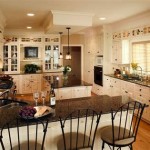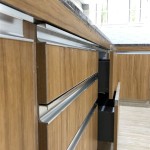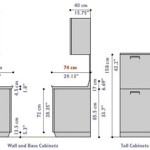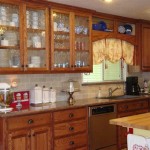Add Trim to Kitchen Cabinets: A Comprehensive Guide
Kitchen cabinets play a vital role in defining the overall look and functionality of your kitchen. Adding trim to these cabinets can elevate their appearance, enhance their functionality, and create a more cohesive design.
Benefits of Adding Trim to Kitchen Cabinets
- Adds visual interest and detail
- Covers gaps between cabinets and walls
- Provides a transition between different cabinet styles
- Protects cabinet edges from damage
Types of Trim
There are various types of trim available for kitchen cabinets, each with its own unique aesthetic and function:- Molding: A thin, decorative strip of wood or composite material that can be applied to the edges of cabinets.
- Cornice: A crown-shaped molding that adds a decorative touch to the top of cabinets.
- Baseboard: A wider molding that covers the gap between the bottom of cabinets and the floor.
- Scrim: A thin, flexible material that is used to cover gaps between cabinets and walls.
Choosing the Right Trim
When selecting the trim for your kitchen cabinets, consider the following factors:- Cabinet style: Choose a trim that complements the design and ornamentation of your cabinets.
- Kitchen decor: The trim should harmonize with the overall decor of your kitchen, from the countertops to the flooring.
- Functionality: Determine whether the trim serves a practical purpose, such as covering gaps or providing additional storage.
- Material: Trim can be made from various materials such as wood, composite, or even metal. Select a material that is durable and easy to maintain.
Installing Cabinet Trim
Installing trim to kitchen cabinets requires precision and attention to detail. Here is a general overview of the steps involved:- Measure and cut the trim to fit the desired areas.
- Apply adhesive or nails to secure the trim to the cabinets.
- Fill any gaps between the trim and the cabinets with caulk.
- Sand and paint or stain the trim to match the finish of your cabinets.
Maintenance and Care
To maintain the beauty and functionality of your cabinet trim, follow these tips:- Clean the trim regularly with a mild detergent and water.
- Touch up any nicks or scratches with paint or stain.
- Inspect the trim periodically for any signs of wear or damage and make repairs as needed.
Conclusion
Adding trim to kitchen cabinets can transform the look and functionality of your kitchen. By carefully considering the type, material, and installation method, you can create a cohesive design that will enhance the beauty and practicality of your cabinets for years to come. Whether your goal is to add visual interest, cover gaps, or provide additional storage, trim is a versatile and effective solution that can elevate the functionality and style of your kitchen.
From Drab To Fab Adding Trim Cabinets

From Drab To Fab Adding Trim Cabinets

How To Add Trim And Paint Your Laminate Cabinets

Adding Shaker Trim To Flat Panel Cabinets Hometalk

How To Add Trim And Paint Your Laminate Cabinets

Easy And Inexpensive Cabinet Updates Adding Trim To Cabinets Drawers The Rozy Home

Adding Molding To Old Cabinets Diy Tutorial Cabinet Doors Kitchen

Adding Moldings To Your Kitchen Cabinets Remodelando La Casa

Add Moulding To Flat Cabinet Doors Home Kitchens Kitchen Cabinets Diy

How To Get A Custom Cabinet Look Using Trim Sincerely Marie Designs
Related Posts








